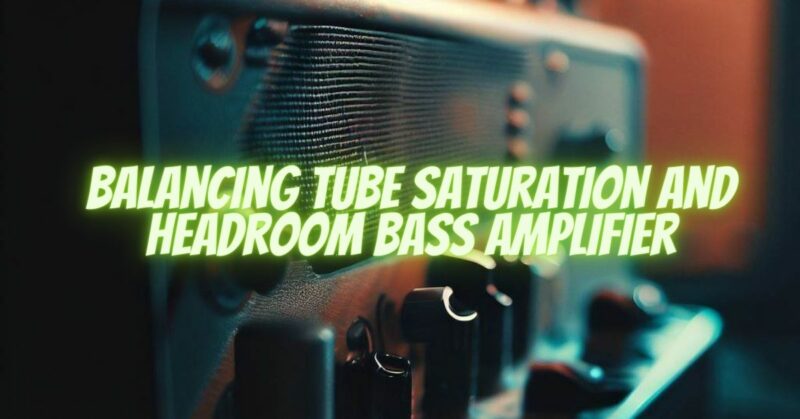Achieving the perfect balance between tube saturation and headroom in a bass amplifier is a delicate art. The right combination allows bass players to dial in a warm, rich tone while maintaining clarity and dynamic range. In this article, we will explore the importance of finding the sweet spot between tube saturation and headroom, offering insights and tips to help you achieve the desired sound in your bass amplifier.
- Understanding Tube Saturation: Tube saturation refers to the natural distortion that occurs when pushing the tubes in a bass amplifier to their limits. It adds warmth, harmonics, and a vintage character to the bass tone. When properly controlled, tube saturation can enhance the depth and richness of your sound, adding a desirable grit and complexity. However, too much saturation can result in a loss of clarity and definition, making it crucial to strike the right balance.
- Maximizing Headroom: Headroom refers to the available power and volume capacity of your bass amplifier before distortion occurs. It allows your bass notes to come through with clarity and punch, especially during dynamic playing or when dealing with low frequencies. Sufficient headroom ensures that your bass lines retain their integrity, providing ample room for peaks and transients without sacrificing the overall tone. A lack of headroom can lead to compressed and muddy sounds, hindering your playing experience.
- Finding the Sweet Spot: Achieving the ideal balance between tube saturation and headroom requires experimentation and careful adjustment. Start by setting your amplifier’s gain and volume controls to moderate levels. Gradually increase the gain to introduce tube saturation while monitoring the sound quality. Pay attention to how the harmonics and warmth contribute to the overall tone without overwhelming it. If the sound becomes too saturated, back off the gain slightly to maintain clarity.
- Utilizing EQ Controls: Equalization is an essential tool for shaping your bass tone while maintaining the balance between tube saturation and headroom. Experiment with the bass, midrange, and treble controls to enhance specific frequencies and contour your sound. Be mindful not to push the EQ settings to extreme levels, as it can lead to excessive distortion or a loss of headroom. Use the EQ controls in moderation to finesse your tone and maintain clarity.
- Consider Your Playing Style and Genre: Your preferred playing style and the genre of music you perform will also influence how you balance tube saturation and headroom. For example, if you play in a rock or blues band, you might desire more tube saturation to achieve a vintage, overdriven tone. On the other hand, if you play in a jazz or funk setting, a cleaner and more defined tone with ample headroom may be preferable. Consider the sonic requirements of your musical context and adjust your settings accordingly.
Conclusion:
Balancing tube saturation and headroom in a bass amplifier is crucial for achieving a desirable and well-rounded tone. Experimentation, careful adjustments, and a keen ear are key to finding the sweet spot. By understanding the role of tube saturation and maximizing headroom, you can unlock a world of sonic possibilities in your bass playing. Take the time to explore different settings, utilize the EQ controls effectively, and consider your playing style to create a balanced and dynamic bass tone that suits your musical preferences.


